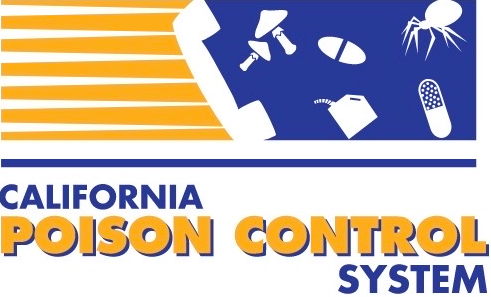Updated: February, 2023 by Jeremy Hardin, MD and Binh Ly, MD
Original author: Binh Ly, MD
Introduction
Acute cyanide poisoning is rare and often life-threatening if untreated. Cyanide is widely used across multiple industries including metallurgy, photography, plastic manufacturing, fumigation, jewelry polishing, cosmetics, and chemical synthesis. It is also found naturally within certain pitted fruits and is a by-product of combustion. Accidental occupational or environmental exposure as well as intentional poisoning are possible, and rapid recognition and treatment with the appropriate antidote is essential to prevent mortality.
Case presentation
A 6 year old male with a past medical history of autism presents to the Emergency Department after being found by his parents unresponsive next to an open bottle of pills. His initial vital signs were temperature 36.9 degrees Celsius rectally, blood pressure 72/48 mmHg, heart rate 150 beats/minute, RR 26 breaths/minute, and oxygen saturation 100% on facemask with oxygen flow rate of 15 liters/min. On examination he was unconscious but did withdraw to painful stimuli in all extremities. There was no evidence of trauma, and his pupils were equal and reactive to light and bedside glucose test was 231 mg/dL. The physician decided to intubate the patient to protect his airway. Electrocardiogram demonstrated sinus tachycardia but was otherwise normal. Blood was obtained for analysis immediately following intubation and an arterial blood gas revealed: pH 6.97, pCO2 37 mmHg, and pO2 235 mmHg. Serum chemistry was significant for bicarbonate 7 mEq/L, glucose 226 mg/dL and an anion gap of 34. Measured serum osmolarity was 302 mOsm/kg and calculations yielded an osmol gap of 2 (normal range -5 to 15). Initial plasma lactate 17.3 mmol/L (normal range 0 - 2.2 mmol/L). Transaminases and other measures of liver function were normal. Ethanol, acetaminophen, and salicylate concentrations were undetectable. Urine immunoassay drug of abuse screen was negative.
Further history obtained from the mother revealed that the pill bottle found with the patient contained laetrile which she had been taking to prevent cancer. The patient went into cardiac arrest shortly after arrival to the emergency department and subsequently expired despite receiving appropriate antidotal therapy and aggressive resuscitative measures.
Questions
- What is laetrile?
- Under which clinical scenarios should cyanide poisoning be suspected?
- When utilizing antidotal therapy for cyanide poisoning, what potential problems associated with administration should the clinician consider before giving each agent?
Epidemiology
Hydrogen cyanide was first isolated in 1782 by Swedish chemist Carl Wilhelm Scheele who reportedly died four years later due to cyanide poisoning. Cyanide gas was widely used as a chemical warfare agent in World War I, and as an agent of genocide in the form of hydrocyanic acid pellets (Zyklon B) in Nazi concentration camp gas chambers during World War II.
In 2020 there were 247 cases and 4 deaths associated with acute cyanide poisoning that were reported to the National Poison Data System. While acute cyanide poisoning is rare, this is still likely a significant underestimate of the number of true cases given the severity of toxicity and high likelihood of rapid death that would preclude poison control centers being contacted.
Inorganic cyanide salts such as sodium cyanide and potassium cyanide are industrial reagents used in metallurgy, photographic developing, plastic manufacturing, jewelry polishing, and chemical synthesis. Organic cyanide compounds are called nitriles and are commonly found in glues, nail polish removers, rubber compounds, and latex-free medical gloves. Cyanogenic glycosides such as amygdalin are found within plants of the Manihot spp (cassava), Linum spp, Lotus spp, Prunus spp (apricots, bitter almond, cherry, peaches), Sorghum spp, and Phaseolus spp. Combustion of materials such as wool, silk, synthetic rubber, and polyurethane generates cyanide as a by-product and can lead to poisoning via inhalation during structure fires. Iatrogenic cyanide poisoning via excessive or prolonged nitroprusside infusion has also been described. Chronic cyanide poisoning (Konzo) due to malnutrition with concomitant cyanide ingestion due to inadequate cassava root processing is also possible but will not be covered within the scope of this article.
In addition to being a well-known agent of homicide via poisoning, cyanide has also been implicated in many famous suicides including Heinrich Himmler, Herman Goring, Wallace Carothers, and the 1978 mass suicide led by Jim Jones.
Pathophysiology
Cyanide is a compound composed of a carbon atom bound to a nitrogen atom by three molecular bonds. It is a potent chemical cellular asphyxiant that inhibits multiple enzyme systems including the aerobic utilization of oxygen by cytochrome oxidase. Cytochrome oxidase is an enzyme in the electron transport chain within mitochondria that is responsible for the aerobic production of adenosine triphosphate (ATP). As a result of this inhibition, excess hydrogen ions lead to acidemia, and ATP production is shifted to the much more inefficient anaerobic pathway with resultant lactate formation.
Cyanide is also a potent cardiac and neurologic toxin, particularly in areas of the brain with high oxygen demand and metabolic activity such as the basal ganglia, cerebellum, and sensorimotor cortex. Rhodanese (cyanide sulfuryl transferase) is responsible for detoxifying cyanide in humans but is rapidly overwhelmed in the setting of acute poisoning. The majority of unbound cyanide is metabolized to thiocyanate and excreted in the urine.
Cyanide can also be generated in-vivo after ingestion of cyanogenic glycosides. Amygdalin is converted by intestinal beta-d-glucosidase to glucose, benzaldehyde, and cyanide. Interestingly, this metabolism does not occur if amygdalin is administered intravenously.
Acute ingestion of as little as 200mg of cyanide salt can be lethal in adults. Cyanide can also be absorbed through the skin or inhaled as a gas. Inhaled cyanide of greater than 270 ppm is immediately lethal.
Clinical Manifestations
Rapid onset of severe toxic effects shortly after exposure to cyanide is the hallmark of acute cyanide poisoning. While this is often true in severe poisoning, nonspecific and vague symptoms such as headache, nausea, vomiting, anxiety, agitation, and confusion are also seen in cases of mild to moderate toxicity. In severe cases coma, hypotension, seizures, and bradycardia often precede rapid cardiovascular collapse and death. “Cherry-red” skin is often described and is due to impaired oxygen utilization and increased oxygen concentration within venous blood. Of note, hydrogen cyanide gas is well described to have a bitter almond odor but is not detectable by everyone due to genetic polymorphisms.
Diagnostics
Clinical history and presentation are the most important factors to making the diagnosis of acute cyanide poisoning. Patients with occupational risk of cyanide exposure, fire exposure, or clinical manifestations of acute cyanide poisoning merit rapid treatment prior to further diagnostic testing. Specific blood levels of cyanide and its metabolite thiocyanate are possible to obtain but are not routinely available and will not result in a timeframe that is appropriate for acute management.
Due to the inhibition of oxygen utilization, arterial blood may not unload oxygen and central venous blood may have a higher-than-expected oxygen saturation (>90%). This phenomenon is sometimes referred to as “arterialization” of venous blood. While the presence of this finding may be suggestive of acute cyanide poisoning, it may not be sufficiently specific for clinicians to completely rely on it to initiate potentially life-saving therapy for cyanide. Moreover, the finding may also be present in other medical conditions and poisonings in which oxygen utilization is impaired. Lastly, venous blood gases are not routinely sampled from central sites and application of the >90% oxygen saturation finding to peripherally obtained venous blood is not currently recommended.
Elevated lactate is another commonly used but nonspecific surrogate marker of acute cyanide poisoning. Several caveats should be considered in interpreting lactate because elevations may also occur with ingestion of ethylene glycol antifreeze, propylene glycol antifreeze, or methanol via different mechanisms. The principal metabolite in the metabolism of ethylene glycol, glycolic acid, shares sufficient chemical structural homology to lactate. The presence of glycolic acid may cause interference in many analyzers and result in falsely elevated lactate measurements. Lactic acidosis has also been rarely described in cases of methanol poisoning and attributed to inhibition of oxidative phosphorylation by formic acid. Metabolism of propylene glycol produces both isomers of lactate. Because of the aforementioned reasons, elevated lactate is not sufficient to diagnose cyanide poisoning or exclude any of the toxic alcohols mentioned. Additionally, metformin and severe acetaminophen poisonings have been described to cause lactic acidosis. The toxins mentioned above are not intended to be an exhaustive list of substances producing elevated lactate measurements but rather to illustrate pitfalls in the interpretation of the result.
Treatment
All cyanide exposures should be treated as potentially lethal, with rapid initial assessment and management focused on protection of the airway, oxygenation, and cardiovascular support. Intubation and mechanical ventilation may be necessary, along with intravenous fluids and vasopressors for hypotensive patients, and sodium bicarbonate for acidemia.
Multiple antidotes exist for the treatment of acute cyanide poisoning. For several decades the mainstay of antidotal treatment for suspected acute cyanide poisoning has been the administration of Nithiodote – a nitrite to induce methemoglobinemia and thiosulfate. Both nitrite and thiosulfate when given alone have been demonstrated to mitigate cyanide toxicity but greater benefit has been demonstrated when they are used together. While the administration of thiosulfate has few downsides, nitrites may precipitate or exacerbate hypotension through vasodilatory effects. Additionally, nitrites lead to the production of methemoglobinemia, which may complicate concomitant carbon monoxide poisoning and cellular hypoxia in fire victims.
Since the Food and Drug Administration approved its use for cyanide poisoning in 2006, hydroxocobalamin, a vitamin B12 precursor, has largely replaced nitrite and thiosulfate as the first line antidote because of its ability to ameliorate toxicity with a more desirable safety profile. Acute allergic reactions and transient reddish discoloration of skin, mucous membranes, and urine may result from administration of hydroxocobalamin. While the reddish discoloration may be seemingly inconsequential, it may have important implications should the patient later require hemodialysis for severe acidemia, hyperkalemia, toxic alcohol intoxication, or renal insufficiency. During dialysis, blood normally passes on one side of a semi-permeable membrane and dialysate on the other. When hydroxocobalamin is present in the body, it not only discolors body fluids but will also discolor the dialysate as blood passes by the membrane. Most dialysis machines are equipped with photo-sensors intended to detect the undesired passage of red blood cells across the membrane and automatically shuts down the machine when a “blood leak” is detected. While it is possible to manually disable the sensor on some dialysis machines, disabling this safety mechanism is not advisable. When considering empiric administration of hydroxocobalamin, clinicians should also factor in the likelihood of the patient’s potential need for dialysis in the course of treatment.
Activated charcoal has a low affinity for cyanide but can be considered in clinically appropriate patients as it has been shown to bind doses up to 500 mg. Amyl nitrate is no longer approved by the FDA for treatment of acute cyanide poisoning due to low effectiveness and risk of diversion for abuse. Dicobalt edetate is used outside of the United States but has an unfavorable risk profile when compared to Nithiodote and hydroxycobalamin. There is no role for hyperbaric oxygen in the treatment of acute cyanide poisoning.
Conclusion
Acute cyanide poisoning is a rare clinical entity, and making the diagnosis and providing treatment in a timely manner requires a high degree of clinical suspicion. All cyanide exposures should be treated as potentially lethal, and rapid aggressive treatment should be considered if cyanide poisoning is part of the differential diagnosis.
Questions & answers
- What is laetrile? Laetrile is also known as amygdalin or “Vitamin B17”. It is marketed as having antineoplastic properties and is widely available in supplement shops and over the internet. There is a lack of evidence to support claims of medical benefit and significant evidence of toxicity.
- Under which clinical scenarios should cyanide poisoning be suspected? Sudden collapse of an individual with occupational risk of cyanide exposure, fire victims, attempted suicide patients with unexplained coma, ingestion of acetonitrile containing nail polish remover, ingestion of plants which contain cyanogenic glycosides.
- When utilizing antidotal therapy for cyanide poisoning, what potential problems associated with administration should the clinician consider before giving each agent? When administering nitrites, clinicians should be aware that the production of methemoglobinemia may impair blood oxygen carrying capacity and delivery to end organs, particularly in fire victims with carbon monoxide poisoning. The clinician should also not be surprised if the patient becomes hypotensive following nitrite administration. Administration of thiosulfate alone has fewer downsides. For patients with severe acidemia who may require hemodialysis, the administration of hydroxocobalamin may cause some dialysis machines to initiate an auto-shutdown process due to a false “blood leak” detection across the dialysis membrane. A careful risk-benefit analysis should be determined for use of cyanide antidotes when clinicians are faced with these situations.



